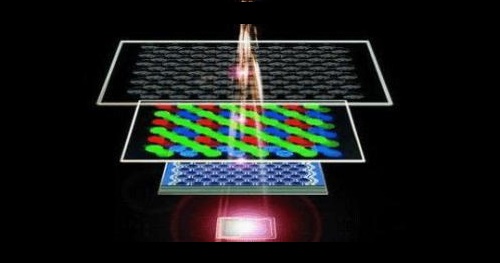
News Center
Domestic sensor production is expected to overtake in corners, four obstacles need to be overcome first
- Categories:Industry information
- Time of issue:2016-09-13 17:48
(Summary description) Since the release of the "13th Five-Year Plan", the Smart City and Internet of Things plan once again pushed sensors to the forefront. As the sensor of the "bridge" of the smart city, the industry has also ushered in a big explosion. Market survey data show that my country currently has more than 1,700 companies specializing in sensor production and research, and the market size is expected to reach 120 billion. The McKinsey report pointed out that by 2025, the economic benefits brought by the Internet of Things will be between US$2.7 trillion and US$6.2 trillion. Among them, the sensor as the entrance to data collection, the "heart" of the Internet of Things, will usher in a huge room for development. Domestic sensor production is expected to overtake in corners, four obstacles need to be overcome first At present, my country’s sensor industry is at a critical stage in the development of new sensors with miniaturization, multi-functionalization, digitization, intelligence, systemization, and networking as the core. Thanks to the rapid development of the Internet of Things, my country’s The gap between foreign countries is gradually narrowing, and the proper industrial layout is more likely to achieve overtaking in corners. At present, there are regional sensor enterprise clusters in my country's sensor industry. The enterprises are mainly concentrated in the Yangtze River Delta region, and gradually form a regional spatial layout dominated by central cities such as Beijing, Shanghai, Nanjing, Shenzhen, Shenyang and Xi'an. The Yangtze River Delta region: Shanghai, Wuxi and Nanjing are the centers. A relatively complete sensor production system and industrial supporting facilities including thermal, magnetic, imaging, weighing, photoelectric, temperature, and gas sensors have gradually been formed. Pearl River Delta Region: Mainly the central city of Shenzhen. The sensor industry system based on thermal, magnetic, ultrasonic, and weighing is formed by foreign-funded enterprises in nearby small and medium-sized cities. Northeast China: Mainly Shenyang, Changchun and Harbin. It mainly produces MEMS force sensors, gas sensors, and humidity sensors. Beijing-Tianjin area: mainly colleges and universities. Engaged in the research and development of new sensors, filling domestic gaps in certain fields. Beijing has established a State Key Laboratory of Micro/Nano. Central China: Mainly Zhengzhou, Wuhan and Taiyuan. The mode of close integration of production, education and research has developed well in industries such as PTC/NTC thermistors, inductive digital liquid level sensors and gas sensors. Although my country's sensor industry chain is improving day by day, there are still some unfavorable factors in the industry. One is the lack of core technologies and weak innovation capabilities. There is a huge gap in the high-end aspects of high-precision, high-sensitivity analysis, composition analysis, and special applications for sensors. Almost 100% of mid-to-high-end sensor products are imported from abroad, and 90% of chips rely on foreign countries. There is a lack of sensors for new principles, new devices and new materials in China. R&D and industrialization capabilities. The second is that the key technology has not yet broken through. There is a big gap in design technology, packaging technology, and equipment technology. There is no set of sensor design software with independent intellectual property rights in China. The reliability of domestic sensors is 1-2 orders of magnitude lower than similar foreign products. Sensor packaging has not yet formed a series, standard and unified interface. The research and development and production of sensor process equipment are monopolized by foreign countries. The third is the irrational industrial structure, incomplete varieties, specifications, and series, and low technical indicators. Domestic sensor products are often not formed into series, and there is a considerable gap between products in terms of measurement accuracy, temperature characteristics, response time, stability, and reliability. The fourth is weak corporate capabilities. More than 95% of sensor companies in my country are small companies with small scale, weak R&D capabilities, and poor scale efficiency. Judging from the current market share and market competitiveness index, foreign-funded enterprises still have a greater advantage. In response to this situation, the country is constantly formulating strategies and policies that are conducive to the development of the sensor industry, and the rapid development of the whole system market throughout the year and the continuous promotion of emerging technologies have also become favorable factors for the development of sensor networks. It is understood that by 2015, the overall market size of my country's Internet of Things will reach 750 billion yuan, an
Domestic sensor production is expected to overtake in corners, four obstacles need to be overcome first
(Summary description) Since the release of the "13th Five-Year Plan", the Smart City and Internet of Things plan once again pushed sensors to the forefront. As the sensor of the "bridge" of the smart city, the industry has also ushered in a big explosion. Market survey data show that my country currently has more than 1,700 companies specializing in sensor production and research, and the market size is expected to reach 120 billion. The McKinsey report pointed out that by 2025, the economic benefits brought by the Internet of Things will be between US$2.7 trillion and US$6.2 trillion. Among them, the sensor as the entrance to data collection, the "heart" of the Internet of Things, will usher in a huge room for development.
Domestic sensor production is expected to overtake in corners, four obstacles need to be overcome first
At present, my country’s sensor industry is at a critical stage in the development of new sensors with miniaturization, multi-functionalization, digitization, intelligence, systemization, and networking as the core. Thanks to the rapid development of the Internet of Things, my country’s The gap between foreign countries is gradually narrowing, and the proper industrial layout is more likely to achieve overtaking in corners.
At present, there are regional sensor enterprise clusters in my country's sensor industry. The enterprises are mainly concentrated in the Yangtze River Delta region, and gradually form a regional spatial layout dominated by central cities such as Beijing, Shanghai, Nanjing, Shenzhen, Shenyang and Xi'an.
The Yangtze River Delta region: Shanghai, Wuxi and Nanjing are the centers. A relatively complete sensor production system and industrial supporting facilities including thermal, magnetic, imaging, weighing, photoelectric, temperature, and gas sensors have gradually been formed.
Pearl River Delta Region: Mainly the central city of Shenzhen. The sensor industry system based on thermal, magnetic, ultrasonic, and weighing is formed by foreign-funded enterprises in nearby small and medium-sized cities.
Northeast China: Mainly Shenyang, Changchun and Harbin. It mainly produces MEMS force sensors, gas sensors, and humidity sensors.
Beijing-Tianjin area: mainly colleges and universities. Engaged in the research and development of new sensors, filling domestic gaps in certain fields. Beijing has established a State Key Laboratory of Micro/Nano.
Central China: Mainly Zhengzhou, Wuhan and Taiyuan. The mode of close integration of production, education and research has developed well in industries such as PTC/NTC thermistors, inductive digital liquid level sensors and gas sensors.
Although my country's sensor industry chain is improving day by day, there are still some unfavorable factors in the industry.
One is the lack of core technologies and weak innovation capabilities. There is a huge gap in the high-end aspects of high-precision, high-sensitivity analysis, composition analysis, and special applications for sensors. Almost 100% of mid-to-high-end sensor products are imported from abroad, and 90% of chips rely on foreign countries. There is a lack of sensors for new principles, new devices and new materials in China. R&D and industrialization capabilities.
The second is that the key technology has not yet broken through. There is a big gap in design technology, packaging technology, and equipment technology. There is no set of sensor design software with independent intellectual property rights in China. The reliability of domestic sensors is 1-2 orders of magnitude lower than similar foreign products. Sensor packaging has not yet formed a series, standard and unified interface. The research and development and production of sensor process equipment are monopolized by foreign countries.
The third is the irrational industrial structure, incomplete varieties, specifications, and series, and low technical indicators. Domestic sensor products are often not formed into series, and there is a considerable gap between products in terms of measurement accuracy, temperature characteristics, response time, stability, and reliability.
The fourth is weak corporate capabilities. More than 95% of sensor companies in my country are small companies with small scale, weak R&D capabilities, and poor scale efficiency. Judging from the current market share and market competitiveness index, foreign-funded enterprises still have a greater advantage.
In response to this situation, the country is constantly formulating strategies and policies that are conducive to the development of the sensor industry, and the rapid development of the whole system market throughout the year and the continuous promotion of emerging technologies have also become favorable factors for the development of sensor networks. It is understood that by 2015, the overall market size of my country's Internet of Things will reach 750 billion yuan, an
- Categories:Industry information
- Time of issue:2016-09-13 17:48
Since the release of the "13th Five-Year Plan", the Smart City and Internet of Things plan once again pushed sensors to the forefront. As the sensor of the "bridge" of the smart city, the industry has also ushered in a big explosion. Market survey data show that my country currently has more than 1,700 companies specializing in sensor production and research, and the market size is expected to reach 120 billion. The McKinsey report pointed out that by 2025, the economic benefits brought by the Internet of Things will be between US$2.7 trillion and US$6.2 trillion. Among them, the sensor as the entrance to data collection, the "heart" of the Internet of Things, will usher in a huge room for development.


Top Ranking
RECOMMEND NEWS
Top Ranking
RECOMMEND NEWS
ONLINE MESSAGE
WRITE A MESSAGE TO US
v
Contact us
Tel:
+86 731-86171990
Email:
sales@firstratesensor.com
Address: 4th Floor, Building 1, Zhitingyuan, Zhenhua Road, Yuhua District, Changsha City, Hunan Province,China.







